Deposit & return: the plastic recycling success opposed by southern Europe
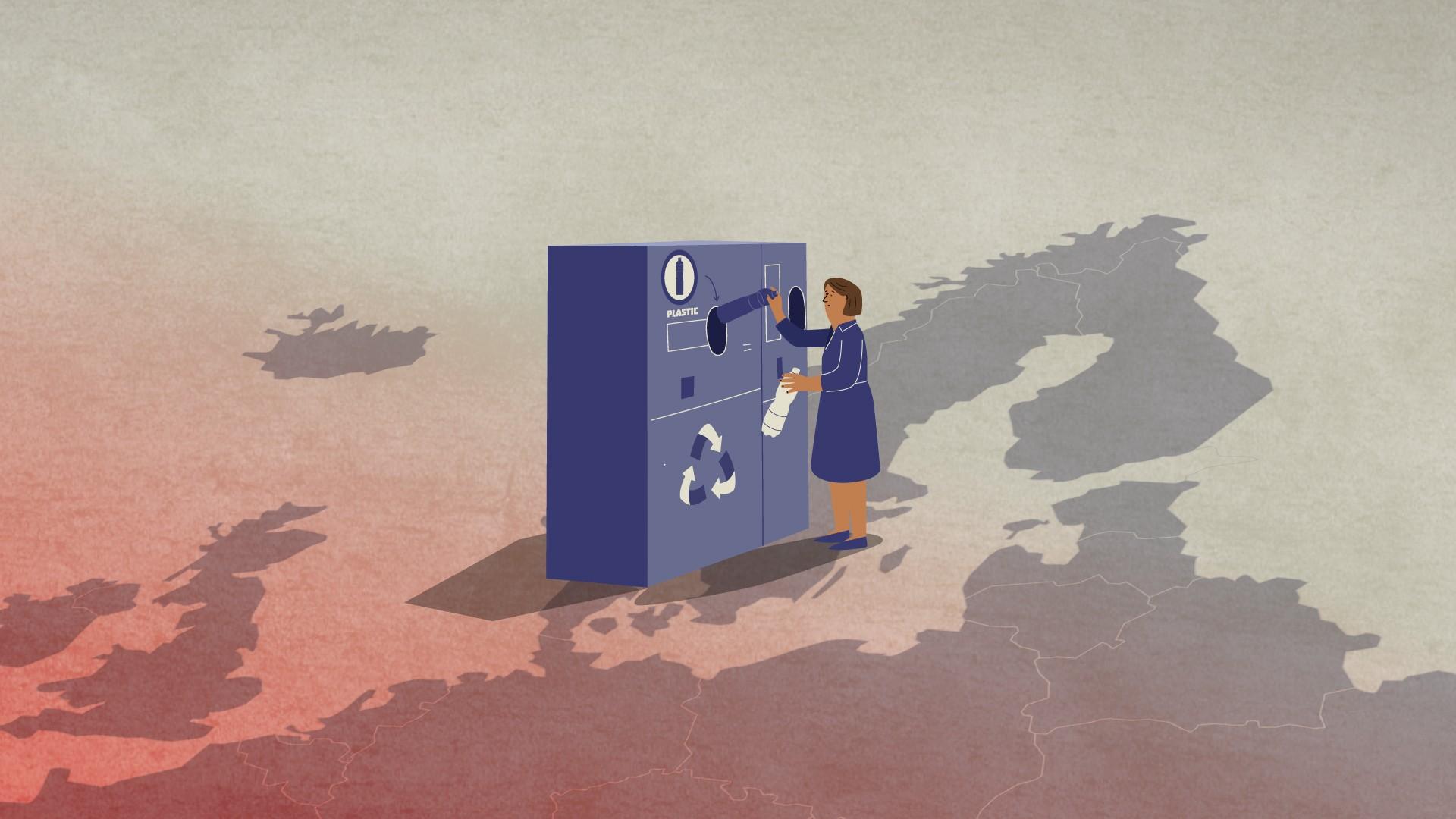
Alexia Barakou
Schemes where customers are incentivised to recycle are a big hit in northern nations but are shunned elsewhere. Is change on the way?
“We have very well-established return habits in Norway. The vast majority of people return their bottles, and if you sit in a park and don’t bother, you put it next to the rubbish bin and then someone comes and picks it up. That’s what is great about the system. If you don’t have a deposit on bottles, no one will bother to pick them up. Just go to England or France or wherever they don’t have a system and see.”
This is how Kjell Olav Maldum, CEO at Infinitum, describes the Deposit and Return Scheme (DRS) that his company handles in Norway. Consumers are charged a deposit fee when they buy a drink in a single-use plastic bottle or aluminum can, money they recover when the empty container is returned. Producers are motivated too, as higher collection rates means less tax.
Norway and its Scandinavian neighbours, perhaps unsurprisingly, pioneered the recycling initiative. But since Sweden first launched a DRS in 1984, there has remained a striking north-south divide across Europe. Almost 40 years later, and with plastic waste a hot topic in EU regulatory circles, will southern nations finally adopt the scheme?
This is how Kjell Olav Maldum, CEO at Infinitum, describes the Deposit and Return Scheme (DRS) that his company handles in Norway. Consumers are charged a deposit fee when they buy a drink in a single-use plastic bottle or aluminum can, money they recover when the empty container is returned. Producers are motivated too, as higher collection rates means less tax.
Norway and its Scandinavian neighbours, perhaps unsurprisingly, pioneered the recycling initiative. But since Sweden first launched a DRS in 1984, there has remained a striking north-south divide across Europe. Almost 40 years later, and with plastic waste a hot topic in EU regulatory circles, will southern nations finally adopt the scheme?
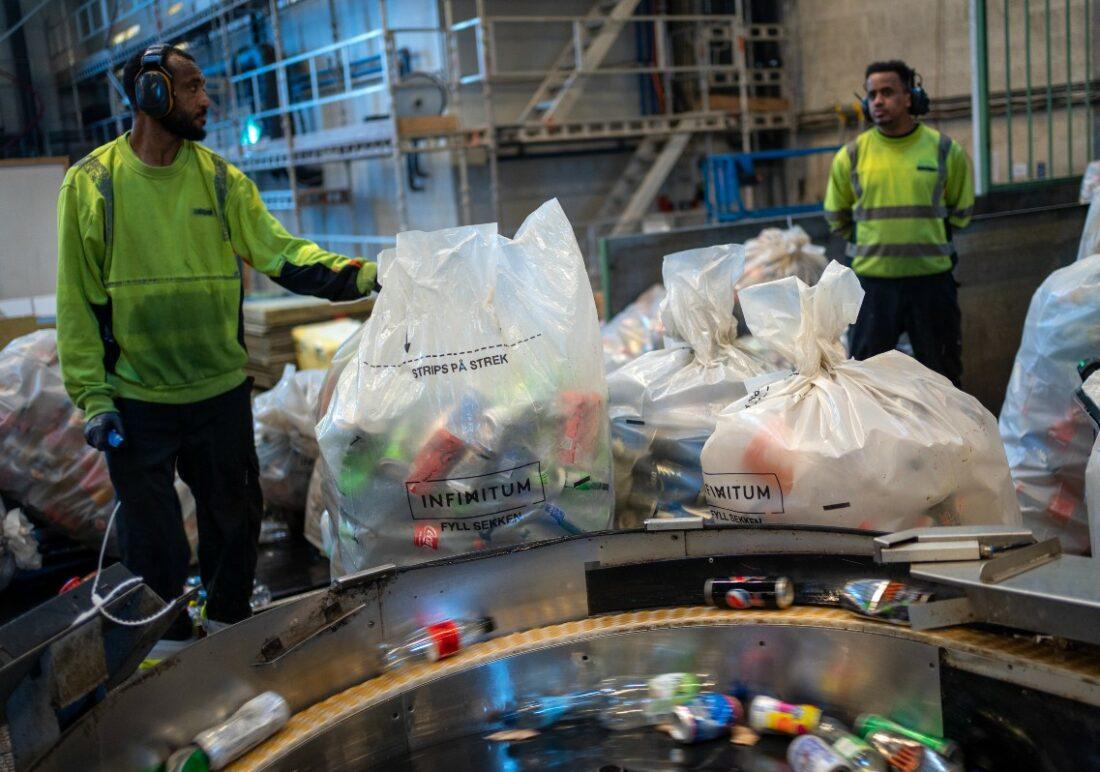
Workers at Infinitum’s bottle recycling facility in Norway sort through bags of plastic bottles and cans.Amund Trellevik
In Italy there is no DRS for single-use containers. But contrary to what Maldum thinks, most producers believe it is not needed. Conai, the national packaging consortium, says the system is “an unnecessary duplication of economic and environmental costs”. Italian producers claim that they achieve high recycling rates by combining traditional collection through containers with a selective collection system, “which would cost ten times less” than a DRS, according to Conai.
A similar argument is made in Spain by Ecoembes, the organisation which groups together those who do business selling containers and are responsible for their collection once they are used. Coca-Cola, Danone, L’Oreal, Carrefour and Unilever are among their members.
A law passed in 2022 makes a DRS in Spain mandatory if 70 per cent separate collection of single-use plastic bottles is not achieved by 2023. Ecoembes plans to exceed that percentage comfortably by collecting plastic bottles only through containers. “The confrontation of systems in reality does not exist,” the company says. “We should avoid an artificial debate in which it seemed that the struggle of models (containers vs. deposit) was more important than the environmental goals to be achieved.”
But is there really no clash of schemes?
DRS came back on the agenda following the 2019 Single-Use Plastics Directive, which sets a target of 77 per cent separate collection of plastic bottles by 2025 and 90 per cent by 2029. Slovakia, Latvia and Malta implemented a DRS in 2022, and Portugal, Romania, Ireland, Hungary and Austria will do so by 2025.
The three biggest southern countries – France, Italy and Spain – are notably absent. Only Portugal is willing to defy the geographical divide, but its scheme has been delayed since January 2022 and authorities are still to decide who will run it. Italy actually provided a DRS for single-use beverage containers in 2021 but still lacks the implementing decree to make the law effective.
The tax on PET bottles this year is NOK 3.91 (0.34 euros) per unit and NOK 6.46 (0.57 euros) for glass and metal . But the industry does not pay this fee today. The collection rate is above 95 per cent, which is the requirement for the tax to be abolished. Infinitum estimates that last year almost 99 per cent of PET bottles and cans were collected.
A similar argument is made in Spain by Ecoembes, the organisation which groups together those who do business selling containers and are responsible for their collection once they are used. Coca-Cola, Danone, L’Oreal, Carrefour and Unilever are among their members.
A law passed in 2022 makes a DRS in Spain mandatory if 70 per cent separate collection of single-use plastic bottles is not achieved by 2023. Ecoembes plans to exceed that percentage comfortably by collecting plastic bottles only through containers. “The confrontation of systems in reality does not exist,” the company says. “We should avoid an artificial debate in which it seemed that the struggle of models (containers vs. deposit) was more important than the environmental goals to be achieved.”
But is there really no clash of schemes?
A divided Europe
Deposit and return schemes are active in 13 European countries: Sweden, Iceland, Finland, Norway, Denmark, Germany, the Netherlands, Estonia and Croatia all had a functioning system before 2007. In the following fourteen years, only Lithuania in 2016 joined.DRS came back on the agenda following the 2019 Single-Use Plastics Directive, which sets a target of 77 per cent separate collection of plastic bottles by 2025 and 90 per cent by 2029. Slovakia, Latvia and Malta implemented a DRS in 2022, and Portugal, Romania, Ireland, Hungary and Austria will do so by 2025.
The three biggest southern countries – France, Italy and Spain – are notably absent. Only Portugal is willing to defy the geographical divide, but its scheme has been delayed since January 2022 and authorities are still to decide who will run it. Italy actually provided a DRS for single-use beverage containers in 2021 but still lacks the implementing decree to make the law effective.
‘The most wonderful treasure’
Norway is a model example for those starting a DRS. To prevent cans and plastic bottles from becoming waste, authorities in 1999 introduced a high environmental tax on drink packaging. The fee decreases in line with the proportion of packaging collected.The tax on PET bottles this year is NOK 3.91 (0.34 euros) per unit and NOK 6.46 (0.57 euros) for glass and metal . But the industry does not pay this fee today. The collection rate is above 95 per cent, which is the requirement for the tax to be abolished. Infinitum estimates that last year almost 99 per cent of PET bottles and cans were collected.
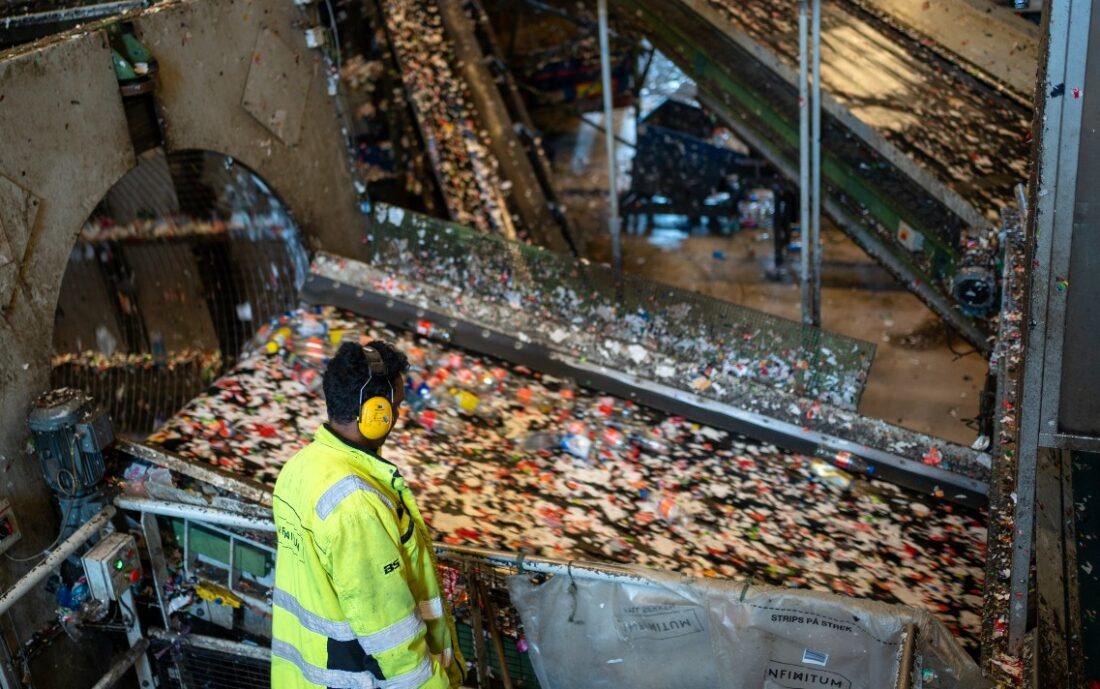
Almost 99 per cent of PET bottles and cans were collected in Norway last year.Amund Trellevik
“The grocery stores and manufacturers in Norway received a financial incentive: ‘feel free to sell plastic bottles. But if you do not collect them afterwards, you must pay’. This is the most wonderful treasure: It will cost you the shirt off your back, unless you do a good job: then you get a low cost,” Maldum says.
A 2020 report by the European Court of Auditors said nations with a DRS collect on average over 80 per cent of PET bottles compared to 58 per cent across the EU. Although debates often focus on collection rates, several other factors make the schemes attractive.
On a small beach near Bergen the impact of plastic littering is clear. Kenneth Bruvik has collected disued plastics and otherc waste that washes onto Norway’s west coast for years. It is mostly from the UK, Spain and Portugal – places incidentally without a DRS.
The lifelong activist believes it is essential that DRS is introduced across Europe. “Here are bottles broken into tiny, tiny pieces,” Bruvik says. “To all of you who manufacture these disposable bottles: stop it! Set up a deposit system. Plastic must have a value so that it is not wasted. It cannot end up in nature and destroy it.”
A 2020 report by the European Court of Auditors said nations with a DRS collect on average over 80 per cent of PET bottles compared to 58 per cent across the EU. Although debates often focus on collection rates, several other factors make the schemes attractive.
Littering lessons
First, it leads to a substantial reduction in littering, as customers have an economic incentive to return the containers. Even if abandoned by the buyer, the deposit means someone else is likely to find and return them to reclaim the money. Studies from Europe and elsewhere found a 70 to 80 per cent reduction in related littering and up to 40 per cent overall.On a small beach near Bergen the impact of plastic littering is clear. Kenneth Bruvik has collected disued plastics and otherc waste that washes onto Norway’s west coast for years. It is mostly from the UK, Spain and Portugal – places incidentally without a DRS.
The lifelong activist believes it is essential that DRS is introduced across Europe. “Here are bottles broken into tiny, tiny pieces,” Bruvik says. “To all of you who manufacture these disposable bottles: stop it! Set up a deposit system. Plastic must have a value so that it is not wasted. It cannot end up in nature and destroy it.”
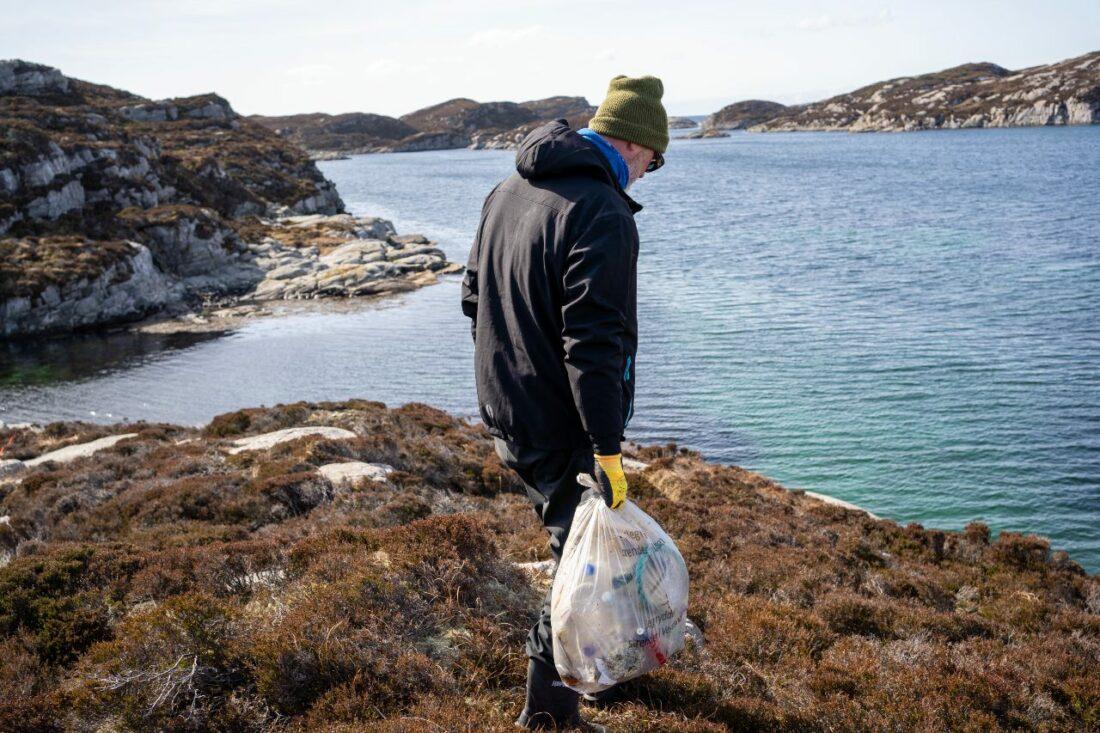
Kenneth Bruvik thinks all countries should establish deposit and return schemes.Amund Trellevik
Carbon dioxide savings
A DRS also increases the purity of the material collected and therefore the quality of what is recovered. Purity is key to achieving the plastic circularity target set out in the 2019 Directive on reducing the environmental impact of certain plastic products. It mandates that PET bottles in the EU contain at least 25 per cent recycled plastic by 2025 and 30 per cent by 2030.The schemes can also help reduce CO2 emissions. The entity that aspires to manage the DRS in Portugal estimates that the system will cut annual emissions by more than 217,000 tonnes of CO2 equivalent, as less new packaging will be produced and the improved quality of the material collected will ensure its circularity. Besides that, the compression system of the DRS machines saves space when transporting the individual bottles for recycling.
In addition, a DRS creates more jobs than both kerbside recycling and landfill waste disposal. “The principal reason is that they recover more of the target material. Maximising recovery rates ensures that the greatest volume of containers moves through each stage of the recovery process (collection, transportation, processing, etc.) and gains the associated jobs,” explains a fact sheet from the environmental NGO Reloop.
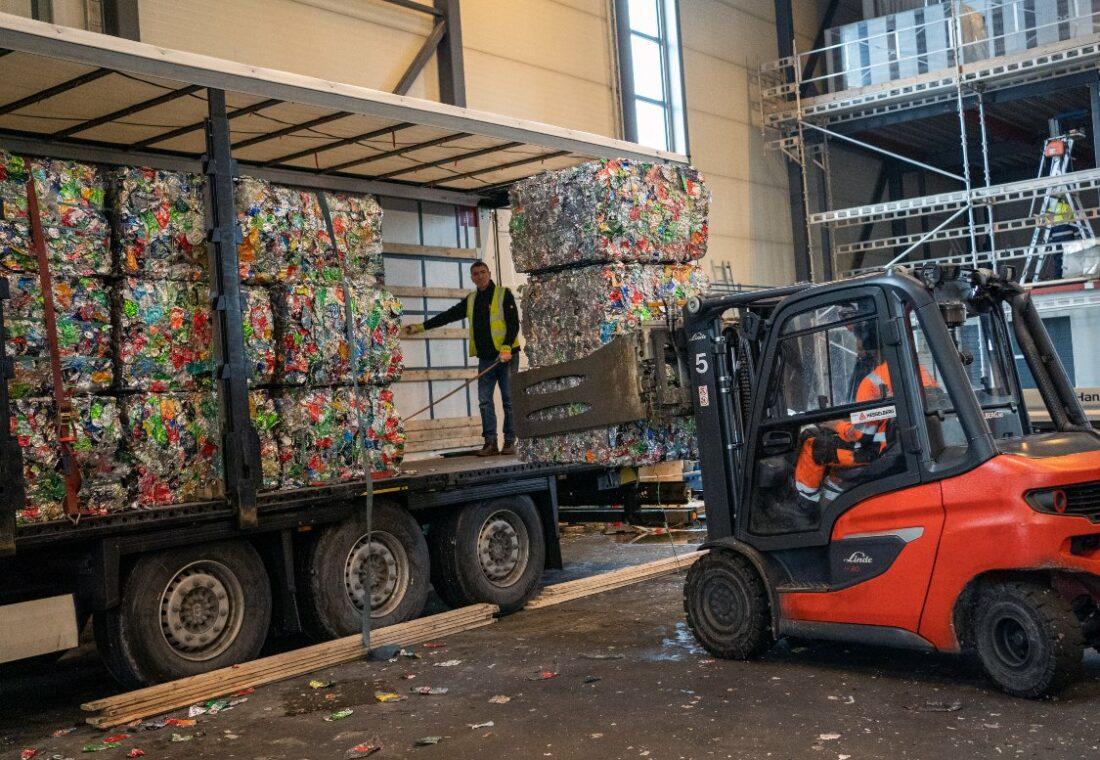
Stacks of compressed plastic bottles and cans are unloaded at the Infinitum factory.Amund Trellevik
‘Life insurance for plastics’
A DRS not only has benefits, however. It also has sizeable infrastructure and operating costs. The first includes purchasing or leasing of reverse vending machines, while the latter must cover, among others, labour of collection and transport.Mario Grosso, a waste managemnet professor at Milan’s Politecnico University, thinks DRS fails to prevent plastic production. “There is a risk of conveying the message that plastic is a good thing if it is recycled,” he says. “DRS is nothing more than life insurance for plastics.”
This focus on recycling is central to the so-called extended producer responsibility (EPR), which obliges manufacturers to deal with the take-back, recycling and disposal of products. A DRS is essentially an instrument to fulfill the EPR. As such it is the producers who bear the cost of implementing a scheme. It is not surprising then that some opposte it, cautious of extra expenses. Producer Responsibility Organisations (PRO) implement the EPR schemes, and Conai in Italy and Spain’s Ecoembes are powerful PROs that have long opposed DRS.
Neither Conai nor Ecoembes publicly rejects DRS because it would cost them more money. That would make them unsympathetic organisations in the eyes of the people: large multinationals that prefer to get a little richer even at the cost of turning the oceans into seas of plastic. To win the public debate, both focus on collection targets, arguing that they can be achieved without a DRS.
Italy’s alternative approach
The Conai alternative is “to flank traditional and selective collection systems”. The latter has been initiated in Italy by Coripet, a consortium that brings together PET packaging manufacturers, which has installed over 800 eco-compactors since 2021. The eco-compactors identify the packaging by a barcode on the bottle, and anyone who dispenses a PET bottle into one recieves points for discounts in shops and the chance to win prizes.“The goal is to exceed 5000 eco-compactor units by 2026. We are convinced that we will reach the targets the EU is asking us to,” says Corrado Dentis, president of Coripet. Still, less than one per cent of the 372,000 PET collected in 2021 came via eco-compactors.
Ecoembes says that Spain’s separate collection rate for PET bottles in 2021 was 71 per cent – a figure that some experts think is hard to believe. Coripet puts Italy’s number at 64 per cent, not close to the EU’s 2025 target of 77 per cent, but perhaps not out of reach. A Spanish or Italian citizen might legitimately ask: why do we have to settle for 77 per cent when in Norway it is 99 per cent?
Editor: Chris Matthews

